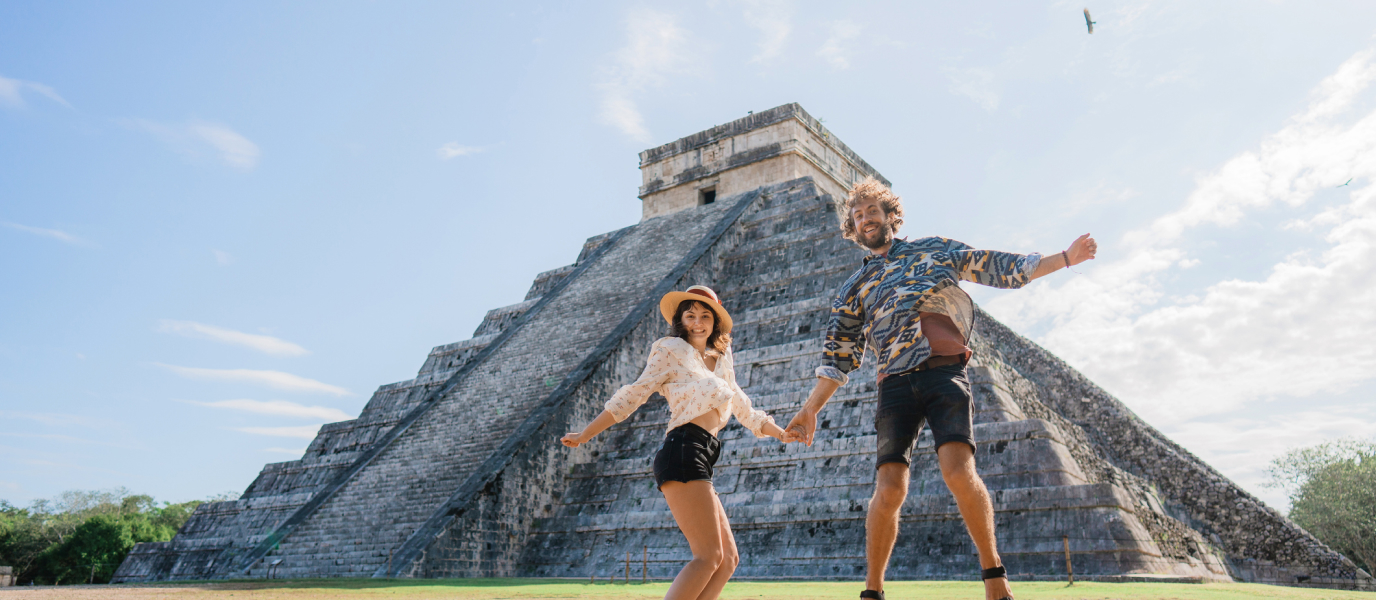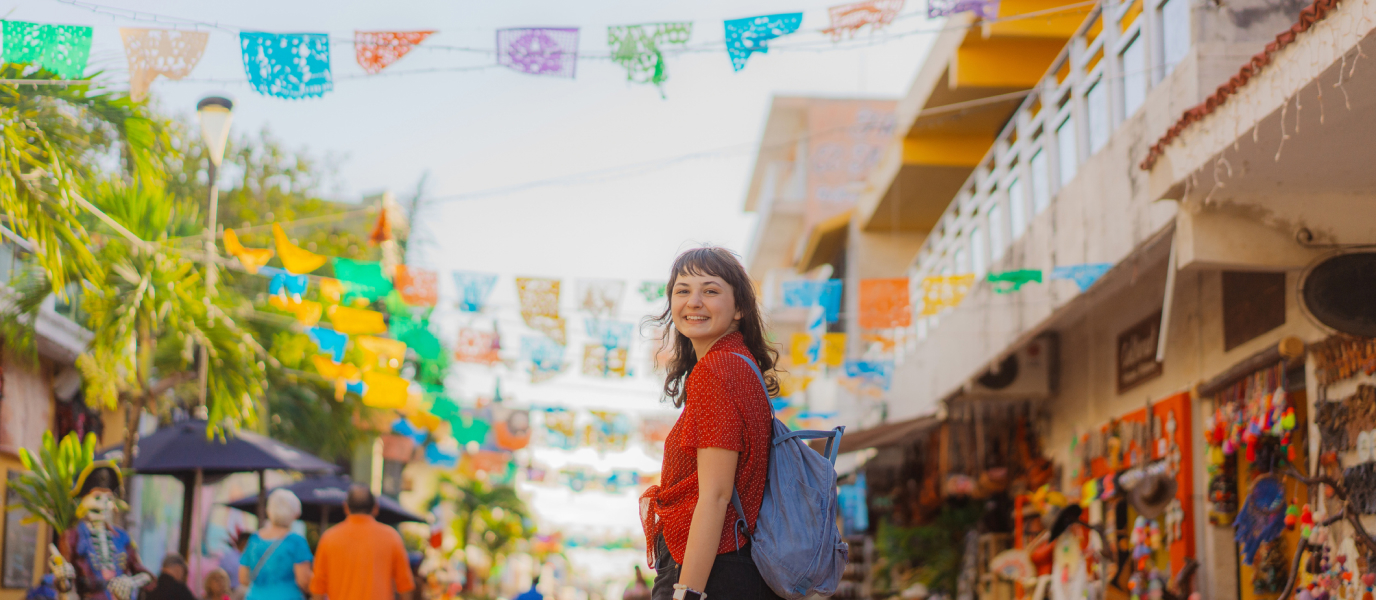There are just a few places in the world where the true weight of History can be felt directly on our own skin, and the Chichen Itza ruins are surely one of them. The legendary capital of the Itzaes, with its enormous temples, headed by the imposing Pyramid of Kukulkan, and the great Sacred Cenote, invites you to live a wonderful journey through time to discover the captivating splendor of the ancient Mayan World.
One of the most important archaeological sites in Mexico, Chichen Itza was declared a World Heritage Site by UNESCO in 1998, and managed to obtain recognition as one of the “New Wonders of the World” after the international vote held in 2007. Beyond the fancy titles, the ancient city, which in its heyday was the most powerful capital in the Yucatan Peninsula, offers an interesting vision of the richness and complexity of the pre-Columbian civilizations in the area.
Chichen Itza’s history: the birth of an empire
Founded around 450 CE, Chichen Itza was one of the most important capitals of the Maya civilization and at the same time it became a singular summary of the history of pre-Hispanic Mexico. Of that great city that came to occupy close to 10 square miles at the time of its maximum splendor (today, the archaeological site covers an area of 2.5 sq. mi), two major periods can be distinguished. The first or foundational period includes the arrival of the first Itzaes from the southern coast of the current state of Quintana Roo. And the second one, towards the end of the 10th century, begins when the city was invaded by the Toltecs, an eminently warrior culture from the central area of current day Mexico.
Architecturally and culturally speaking, this mixture between the original Mayan elements and the influx of Toltec knowledge was what eventually made Chichen Itza an exceptional place and, above all, a great map to understand the richness, diversity and complexity of the great pre-Columbian civilizations.
Discovering Chichen Itza
Obviously, Chichen Itza is an archaeological site, but this ancient Mayan capital is much more than just the remains of a remote era. Walking through its streets and esplanades, discovering its temples and admiring the singular beauty of its layout invites you to discover all of its secrets.
The Chichen Itza Pyramid or “El Castillo”
Officially named as The Temple of Kukulkan, but also known as “El Castillo” (The Castle), it is the most important temple in the city. Reaching almost 80 feet high, each of its four sides is made up of 9 levels, all of them decorated in bas-relief and crowned by an upper platform topped by the ceremonial temple. In each of the four facades, a large central stairway connects the lower esplanade with the top of the great pyramid.
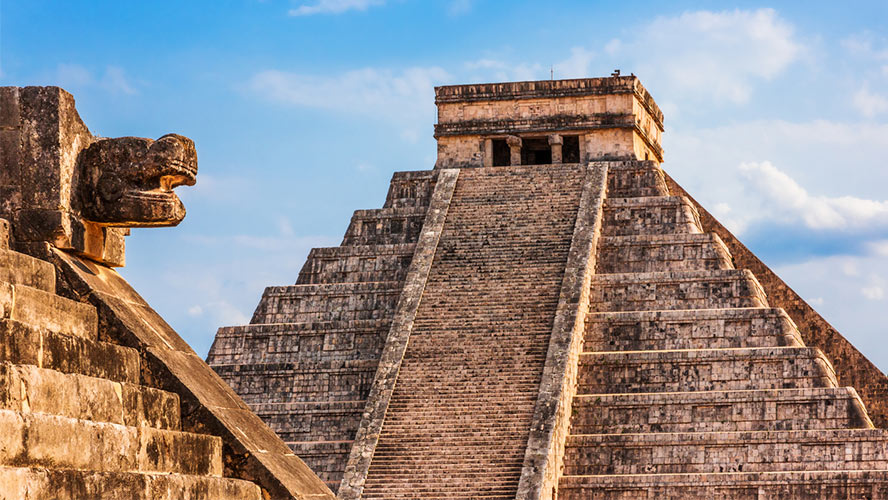
Dedicated to the god Kukulcan –the “feathered serpent”, a Mayan version of Quetzalcoatl, deity of the Toltec pantheon–, the great temple is, in addition to an architectural jewel, an impressive display of astronomical and mathematical knowledge carved in stone. All kinds of symbols related to the calendar are found scattered around its facades. For example: each of the four stairways has 91 steps (adding 364), to which the upper platform is added for a total of 365 units or days of the Haab, the solar agricultural calendar. Several formulas like the previous one make the Pyramid of Kukulcan an authentic three-dimensional scientific treaty.
The Sacred Cenote
Product of the total or partial collapse of the roof of a flooded underground cave, the cenotes are one of the most unique natural formations in the Yucatan Peninsula and, of course, they were a fundamental part of the Mayan cosmogony: a direct point of connection with the Underworld. In the case of Chichen Itza, one of those large sinkholes (197 feet in diameter, vertical walls about 50 feet high and an average depth of 42 feet) was used to perform ritual sacrifices as a tribute to the gods. For centuries, the Sacred Cenote was one of the most important pilgrimage sites in the Mayan World.
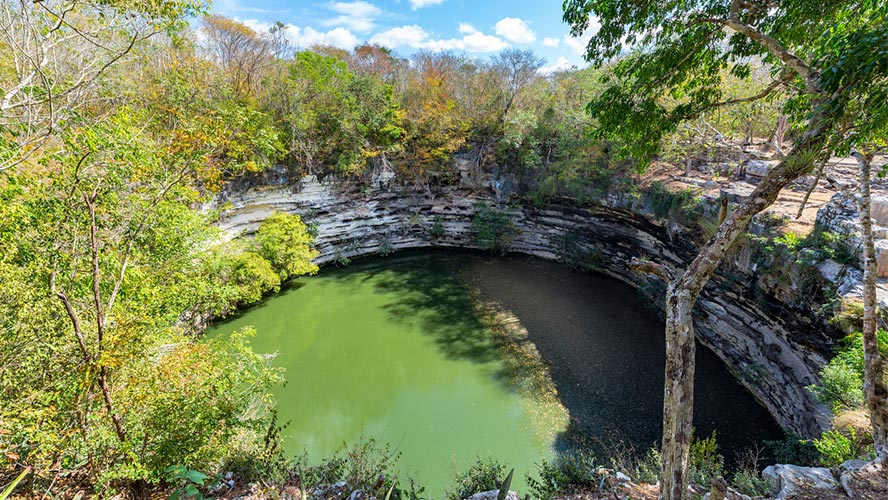
“The mouth of the well of the Itzaes” or “mouth of the well of the water sorcerers”, that is the actual meaning of Chichen Itza in the Mayan language. In other words, the name of the city is a clear reference to the great Sacred Cenote.
The Great Ball Court
More than a sport as we would understand it today, the pre-Hispanic ball game was a complex religious ritual associated with the movements of the stars. Practiced from Nicaragua to the southern United States, the playing field is one of the usual constructive structures in multiple archaeological sites. Chichen Itza is no exception. Decorated with the symbols of mighty Kukulkan, the enclosure is located to the north of “El Castillo”, and is made up of 5 main buildings settled on a north-south orientation: the playing field itself (about 295 feet long and 98 feet wide), flanked by two large stone structures that once could function as a terrace or stand for spectators, as well as the Temple of the Bearded Man, the Southern Tribune, the Temple of the Tigers and a building annexed to the latter in its eastern part.
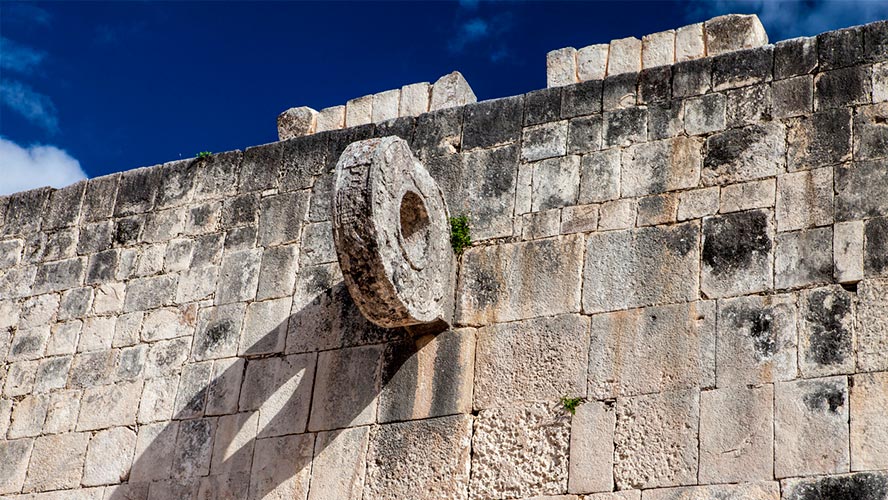
Group of the Thousand Columns
Actually, only 200 columns are part of this quite impressive structure, but it still is one of the most beautiful buildings in the entire archaeological site. Located in the eastern part of the Great Plaza –whose center is occupied by the Pyramid of Kukulkan–, the Group is connected to the Temple of the Warriors, a large, stepped pyramid with over 130 feet in length on each of its four sides, and crowned by an upper temple with an iconic sculptural representation of the Chac Mool, an image associated, once again, with the Toltec presence in the ancient Mayan city. Without a doubt, the whole complex offers one of the best examples of the architectural wealth of Chichen Itza.
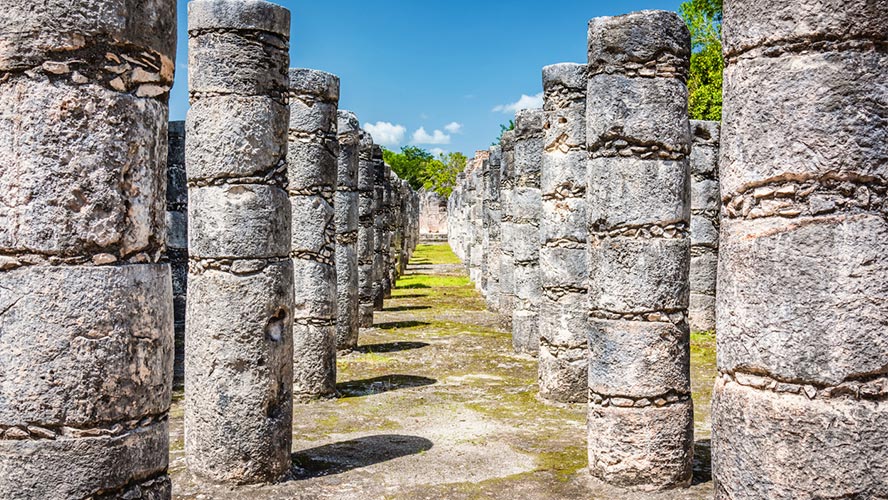
The Observatory
Also known as “El Caracol” (The Shell or The Conch), this is one more of the key buildings in this ancient Mayan capital. The unusual circular tower, about 100 feet tall, rests on two large overlapping rectangular platforms. Inside, a spiral staircase –from which the building takes its name– leads to what was apparently an astronomical observation area. The small rectangular room on the second floor was used to record, through its windows, almost thirty astronomical events, from equinoxes and solstices to eclipses and planetary transits. Observations that were absolutely decisive for the configuration of the city itself and, above all, for the daily lives of its thousands of inhabitants.
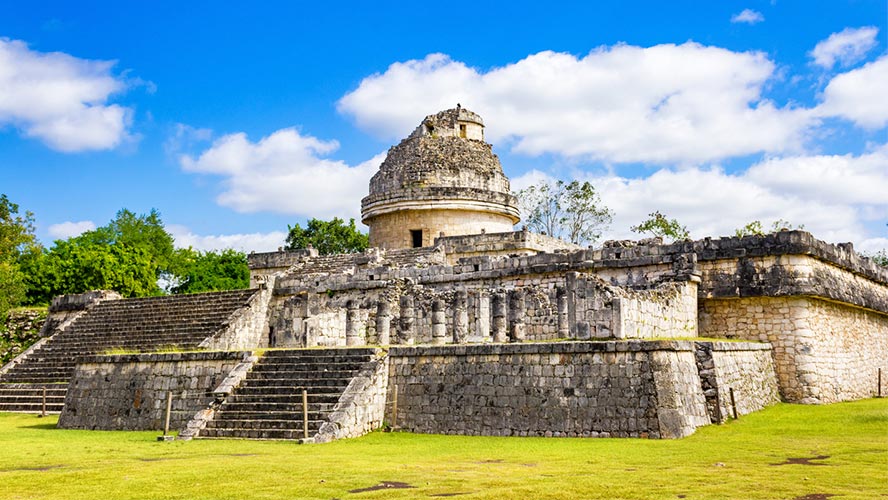
The descent of the serpent
As proved by the Pyramid of Kukulkan or “El Caracol”, the Maya civilization stood out, among many other things, for its sophisticated knowledge in mathematics and astronomy. These sciences “ruled” daily life in Chichen Itza, defining, for example, the agricultural calendar and religious festivals.
But if something clearly demonstrates the degree of sophistication of the ancient Mayan knowledge around the stars, architecture, geometry … it is the “Descent of Kukulkan”. As the sun goes down on the evening of March 21st and September 22nd –dates that mark the spring and autumn equinoxes–, a singular pattern of lights and shadows appears on the stone balustrade of the northern staircase of the great Pyramid of Kukulkan. The sunlight, interrupted by the edges of the platform, projects seven inverted triangles that create the appearance of a snake. As the sun goes down on the horizon so does the powerful Kukulkan, until its shadow connects with one of the colossal feathered serpent heads, carved in stone, which finishes off the lower part of the stairway. In any case, thousands of visitors come to Chichen Itza to witness this unique spectacle every year.
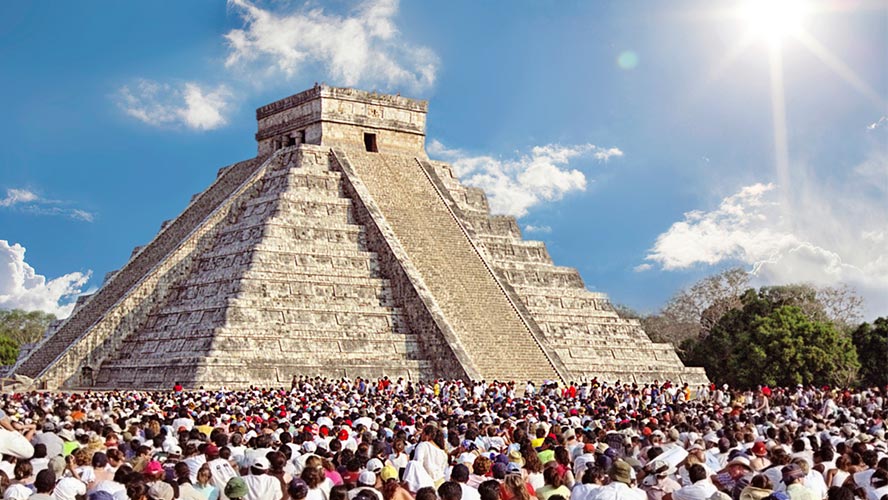
The nights of Kukulkan
And when it comes to spectacles, it is not only the Mayas who made Chichén Itzá their great stage. Today, the ancient city also dresses up for the “Nights of Kukulkan”. At sunset, a tour of the archaeological zone and a narrative and audio-light projection on the Pyramid of Kukulkan, lasting approximately 25 minutes, allows you to learn more about the history of this privileged site and its original inhabitants.
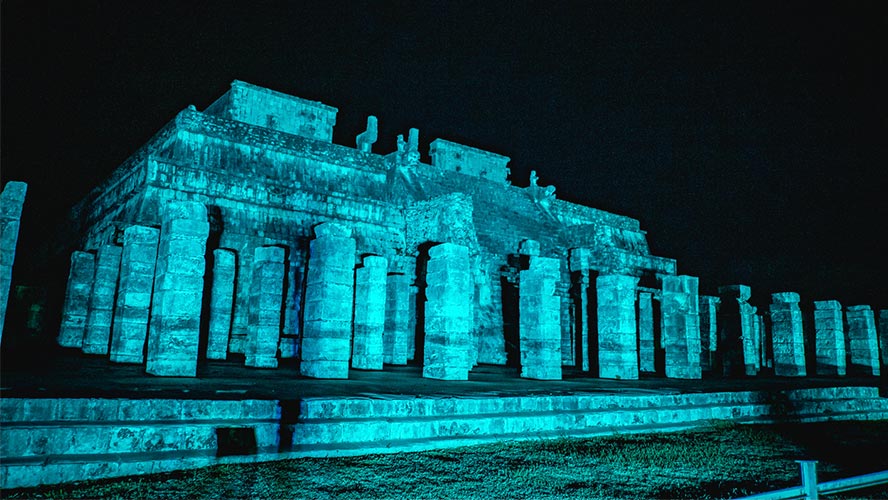
Definitely, visiting Chichen Itza is a must for all of those who visit the northern part of the Yucatan Peninsula. The majestic Mayan capital, which for centuries dictated the designs of an entire civilization, continues to watch over the jungle that surrounds it and welcomes all those who walk through its white sacbes, the old stucco-covered roads built by its ancient inhabitants to connect the known lands to their great city, the beating heart of the Mayan World.





























































